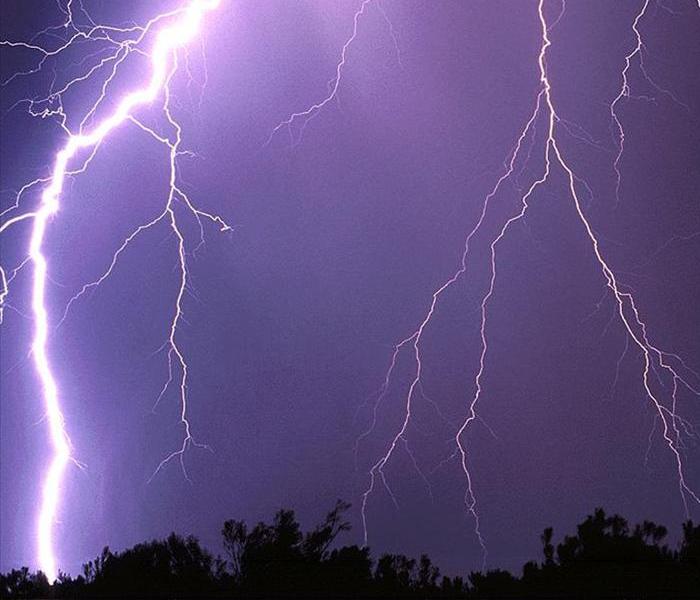Beware Those Uninvited Guests at Picnics and Beach Excursions: Thunder and Lightning Can Be Dangerous
5/27/2014 (Permalink)
Reprinted from www.fema.gov
Beach, softball and picnic season offers lots of opportunities for outdoor fun.
Most of us look forward to these sunny day celebrations all year, but unfortunately Mother Nature doesn’t always cooperate.
Most of us have had the experience of being outdoors when we feel the first few drops of rain on our shoulders, hear rumbles of thunder in the sky or spot a flash of lightning in the distance.
Many of us heard as children that it’s possible to gauge how far away thunder and lightning storm is by counting the seconds between the sound of thunder and the appearance of lightning in the sky.
Scientists say that there is truth to that assumption. While the speed of sound changes depending on the temperature and the amount of humidity in the air, it can reasonably be estimated to travel at approximately 1,200 feet per second or approximately one mile in five seconds.
Counting the seconds after you see the first lightning bolt in the sky, you can estimate how far away it is by using this rough measure. If 10 seconds pass before you heard thunder, then the source of the lightning is approximately 2 miles away.
Safety experts advise abiding by the 30/30 lightning rule: Go indoors if, after seeing lightning, you can’t count to 30 before hearing thunder, and stay indoors for 30 minutes after you hear the last clap of thunder.
Remember, lightning is both unpredictable and dangerous. Between 1950 and 2012, lightning killed more than 4,000 Americans.
The top three states for lightning fatalities are Florida, with 468 deaths between 1959 and 2012; Texas, with 215 deaths between 1959 and 2012, and North Carolina, with 194 fatal strikes
While lightning may be less frequent in other states, it is no less deadly when it strikes. From 1959-2012, 74 New Jerseyans were killed by lightning.
The riskiest time of day for lightning strikes is during summer afternoons and evenings.
If you are caught outside during a sudden thunder and lightning event, get inside a building or take shelter in a hard-top (not a convertible) automobile.
Keep in mind that, contrary to common folklore, rubber-soled shoes and rubber tires provide no protection from lightning. It is the steel frame of an automobile that provides some protection, not its rubber tires. Although you may still be at risk of injury inside an automobile, you are safer there than you would be out in the open.
If you are in an open area without shelter, go to a low place such as a ravine or valley. Be alert for flash floods.
If you are in a forest when a storm approaches, seek shelter in a low area under a thick growth of small trees.
If you feel your hair stand on end, which indicates that lightning is about to strike, squat low to the ground on the balls of your feet, put your hands over your ears and put your head between your knees in order to make yourself as small a target as possible. It’s important to minimize your contact with the ground. Do not lie flat on the ground.
Remember: Your chances of being struck by lightning are about 1 in 600,000 – but it does happen.
Before you make plans for the beach, ball game or picnic, check the weather report to see whether there is a Severe Thunderstorm Watch or Severe Thunderstorm Warning for your area.
By taking a few precautions, you can substantially reduce your risk of being injured by lightning and enjoy all that summer has to offer.
For more information about protecting yourself during lightning and thunderstorms, go to www.ready.gov.




 24/7 Emergency Service
24/7 Emergency Service
